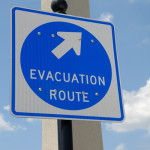Expensive Security System Mistakes
Sometimes you end up paying more than you should when it comes to home security systems. Whether it is from lack of research or sheer convenience, there are ways to effectively invest in your home security without breaking the bank. Review these common home security mistakes to ensure you are getting the most for your money.
• Mistake: Your first option was your only option.
Don’t just go with the first company you find -do your research. Check out both local and national companies to compare rates and get free quotes when possible. This step will help you discover who truly values your security versus those looking for a big sale.
• Mistake: You didn’t consider lifestyle changes.
Aside from thinking about your current needs, you should also consider your future plans. For example, if you’re planning on growing your family, you may want more surveillance in the nursery. Or, if you’re single, you may relocate a few times before settling in to a spot, so you may want to inquire about cancellation or relocation services.
• Mistake: You’re overlapping cameras.
While the idea of having multiple angles on entryways and high traffic areas sounds safer, it could be unnecessary. Focus more on getting the best angles with the least amount of cameras. This will save you money on equipment and could make it easier to manage your system.
• Mistake: You didn’t talk about discounts.
When it comes to discounts, it doesn’t hurt to ask. You could be missing out on special deals and offers, such as a Veteran or senior citizen discount, or you may even be able to work out a payment plan rather than paying it all up front.
• Mistake: You haven’t updated your insurance.
No matter what kind of equipment you choose, be sure to let your home insurance provider know. These systems may add value to your home, and could possibly save you some cash on your monthly payment. But before committing to system, you should check with your provider.
• Mistake: You have more than you need.
In relation to the overlapping cameras, you may have opted for the most comprehensive system when you really could do with a simple set up. Evaluate your needs, such as how many entry points you wish to monitor, and you can tailor your system accordingly. Remember that when it comes to security cameras, choose quality over quantity.
If you’ve made any of these mistakes, you can still make them right. If you need help, please feel free to call us at 888-203-6294. We can help with surveillance equipment, site surveys, and security camera installation. Visit SecurityCamExpert.com to browse our selection and connect with us on Facebook, Google+, Twitter, LinkedIn, and Pinterest.
September Is National Preparedness Month
Recently, Hurricane Harvey and Hurricane Irma have devastated and affected many, leaving a trail of destruction in large areas. Whether it is hurricanes, thunderstorms or tornadoes, natural disasters provide a stark reminder of our vulnerability and that we should always be prepared.
September is National Preparedness Month and this year’s theme is “Disasters Don’t Plan Ahead. You Can.” Each week throughout the month focuses on a different theme, all helping to emphasize preparedness among everyone including youth, older adults, and people with disabilities and others with access and functional needs.
The best way to combat the unpredictability of natural disasters and emergencies is to plan ahead. Here are some helpful tips to help get you started.
Be Informed.
Visit www.ready.gov for more information on what to expect, how to make a disaster kit and how to prepare and plan ahead for disasters.
Many emergencies can happen anywhere, such as power outages or disease outbreaks. But certain disasters are more likely in some places than others. For example, in California, earthquakes are more common than tornados or tropical storms. Understand which types of natural disasters are common for your area and begin preparing for those accordingly.
It is recommended that you understand the local mass warning systems that officials will use to inform the public of extreme weather conditions. Commonly used are the National Weather Service and the U.S. Geological Survey. Know how to receive information from these agencies and prepare a backup way of receiving this information in case your primary system goes down.
You should also know where evacuation points are located in the event you cannot get home or your current location becomes unsafe. Know what circumstances would require evacuation and when to shelter in place.
Make A Plan.
Keep it practical and tailored to disasters you are most likely to encounter. Take what we have previously mentioned and discus it with your family. Go over different disaster scenarios and what the family plan is for each one. Things like whether it occurs on a weekday or weekend and if children are at school should all be considered while planning.
Making a disaster kit is the next step. You should include supplies necessary for a three-day period (the estimated time it might take to clear roads, restore power and have emergency crews reach people).
After a disaster, emergency responders will address critical needs first and might not be able to get to everyone right away. A disaster kit will allow you to take care of yourself, your family, and possibly others, freeing up emergency responders to focus on the critically injured and restoring infrastructure.
Creating multiple kits and storing them in different locations (car, office, home) is suggested – you never know where you will be when disaster strikes.
Get Involved.
You can participate in America’s PrepareAthon! – a nationwide campaign to increase community preparedness and resilience.
Share your own preparedness tips with us on Facebook, Google+, Twitter, LinkedIn, and Pinterest. Visit SecurityCamExpert.com to browse our stock of CCTV security cameras and systems to keep an eye on your properties.
Sun Safety
Now that summer is in full effect, you should be mindful of sun safety practices. Whether you’re enjoying a staycation, vacation, or simply some outdoor fun, be sure to protect your skin from the sun. Here are some helpful sun and skin safety tips to keep in mind.
Cover Up During Transit
The ultraviolet (UV) A rays from the sun may not always cause sunburn, however, exposure can lead to skin aging and skin cancer. If you are sitting in a car or the window seat of an airplane, you may still be exposed as these UVA rays can penetrate glass and plastic. Be sure to cover up and apply sunscreen as needed.
Be Careful Near Water
A 2009 study found that the number of moles children had increased by 5% for every vacation taken near the water. This is concerning because more moles means an increased risk of developing melanoma. While proper sunscreen application helps, it may not be enough. Schedule outdoor activities in the morning and late afternoon and utilize protective clothing and hats.
Don’t Forget About Reflected Rays
When the sun’s rays hit a reflective surface (ex. sand, snow, water), they bounce back up. This increases your exposure as the UV rays are now coming from above and below. The World Health Organization (WHO) reports that water reflects less than 10% of UV rays while sea-foam in a choppy ocean reflects 25%, sand reflects about 15%, and snow reflects almost 50%. Keep your destination in mind and pack the appropriate clothing and sunscreen.
Account For Altitude
Remember that as you get closer to the sun, the air gets thinner, thus there is less atmosphere to block UV radiation. To gauge this, for every 1,000 feet you gain in elevation, the sun’s rays increase in strength by 10-15 percent.
Count The Daylight Hours
Avoiding the sun between 10 am and 4 pm (when the rays are strongest) is typically advised. However, if you’re in a place where the sun doesn’t set until 10pm or later in the summer, it is still possible to get sunburned or damage your skin well past that time frame. If that’s the case, remember to reapply sunscreen while the sun is out.
Don’t Be Fooled By Cool Or Cloudy Conditions
Cloudy, overcast skies give people a false sense of security, often resulting in them believing that staying out in the sun longer will do no harm. While UV radiation may be less when it is cold or overcast, you are still getting some and can still do damage and even get burned. Despite the cold, cloudy weather, you should still apply sunscreen.
Buy Sunscreen At Your Destination
If you’re going on vacation and only taking a carry-on bag, it’s likely that a 3-ounce tube of sunscreen won’t cut it. To ensure you have enough to last for your entire vacation, simply buy a bottle when you arrive at your destination. Having an adequate amount will deter you from skimping your applications.
Share your best sun safety tips with us and your peers on Facebook, Google+, Twitter, LinkedIn, and Pinterest today!
Before you leave for that vacation, secure your home and property with the best security cameras and CCTV surveillance equipment from SecurityCamExpert.com. Browse our selection online or call 888-203-6294 to learn more about our site surveys, quotes, and installation services.
Video Surveillance Troubleshooting
Problems that may arise with security camera systems are sometimes related to powering issues or even factory defects. However, more often than not, these problems are usually attributed to improper cabling and connections, which boils down to the installation.
Prior to security camera system installation, technicians must be mindful of the features, functions, and especially the limitations of the actual hardware. While all installations are different, an understanding of the specific system and the customer’s expectation is crucial for a quality job.
Here are some common installation problems you may come across along with helpful trouble shooting tips.
Rolling Lines On The Screen
Whether they are white or multi-colored, these rolling lines or ghosting over the camera’s video are often caused by video cables that run close to high-voltage power sources.
To prevent this, cameras should be tested at another location prior to installation in order to eliminate any hardware defects as a cause to any future issues. Also, keep wires away from sources that supply high-voltage electrical charges at any point of the run. Improperly grounded electrical circuits can also cause video disturbances, which is why high quality camera cables are crucial.
Infrared Glare/”White Out”
The most common causes of IR glare are reflective surfaces and large, lightly colored areas. “White out” (unrecognizable white silhouettes on screen) is often caused by objects that are too close to the camera. Also, if you install infrared security cameras under eaves, the beams of the IR LEDs may hit parts of the structure and bounce back, causing the reflection to blind the camera.
To combat these potential problems, install your cameras in areas clear of any objects that may cause glare or obstruct the camera’s view. Also, be sure that the user keeps these areas clear (at least three feet). You should also test daytime and low-light conditions before completing installation. Cameras with “Smart IRs” that have dynamic IR strengths can help to alleviate these problems as well and ensure high-quality night time images.
IR Cameras Unable To See In The Dark
In order to employ IR cameras properly, a surface is necessary for the IP light beams to bounce off. For example, when you point a flashlight into the night sky it remains dark because there is nothing allowing the light beams to bounce back.
Choose cameras that have sufficient IR distance capabilities. During installation, point the cameras at an angle facing a surface (ex. ground, wall) and test them under low-light conditions before proceeding.
Extreme Glare During Daylight
If your property has lots of glass doors and windows, you may have an issue with extreme glare. Glare from the sun does not mix well with security cameras, which means a special alternative is necessary.
In these situations, you want to invest in cameras with mechanical Wide Dynamic Range (WDR). These are designed to prevail in extreme lighting conditions. While “digital WDR” does it exist and can be helpful in these situations, it does not work as well as true, mechanical WDR.
Insufficient Power Causing Cameras To Drop Out
Without the proper power source, security cameras will not perform properly, causing them to drop out or lose power. While spec sheets may specify the camera’s power needs, they may not factor in the added power necessary for IR/low-light applications. For example, the system may work fine during the day, but drop out at night when the IR kicks in.
It is advised that you use a power supply which supports twice the voltage requirements of all your cameras combined.
When it comes to power, distance may play a role as well. Voltage drops can occur due to poor quality cables and long distances. To avoid this issue, AC voltage is recommended for runs greater than 250ft.
Inadequate Coverage
With great features and functions come limitations as well. For maximum coverage of your property, first map out your installation to identify areas that need surveillance. Based on the locations, you can determine which specific features you need for certain areas. For example, focal lengths and angles of view should be considered (longer lenses for closer view, shorter lenses for wide-angle shots). In general, license plate cameras should be installed no more than five feet from vehicles and valuable points of interest (such as cash registers, entrances and exits) should have a camera dedicated solely to monitoring that area.
Have you come across any issues not mentioned here? How did you resolve it? Share your stories and advice with us on Facebook, Google+, Twitter, LinkedIn, and Pinterest.
Choose SecurityCamExpert.com for quality security cameras along with professional installation and support services. Visit us online or call 888-203-6294 to learn more!



